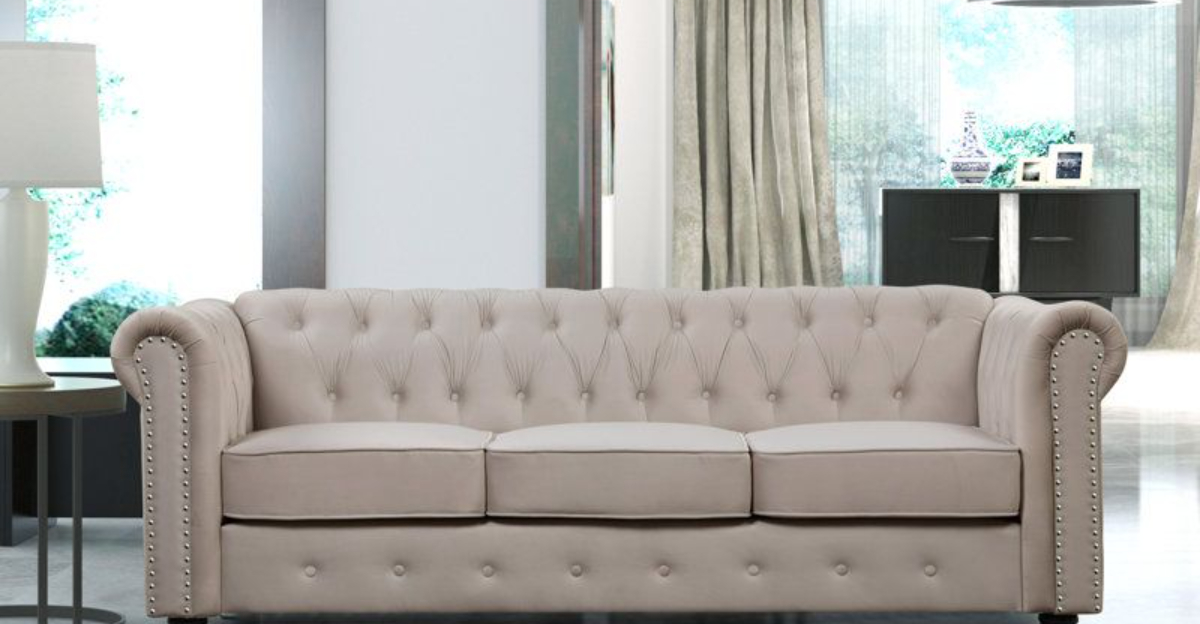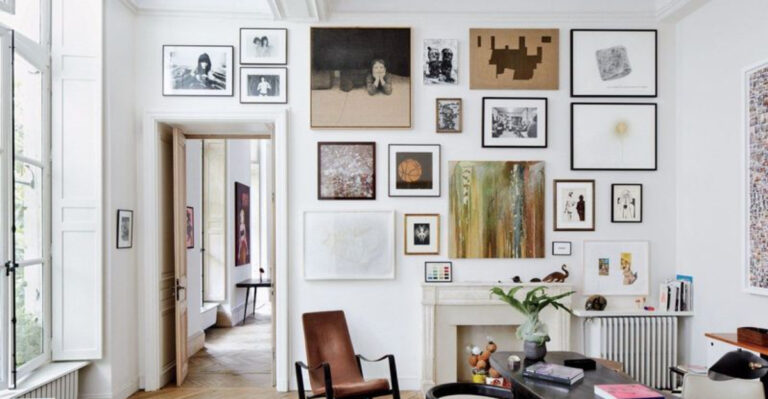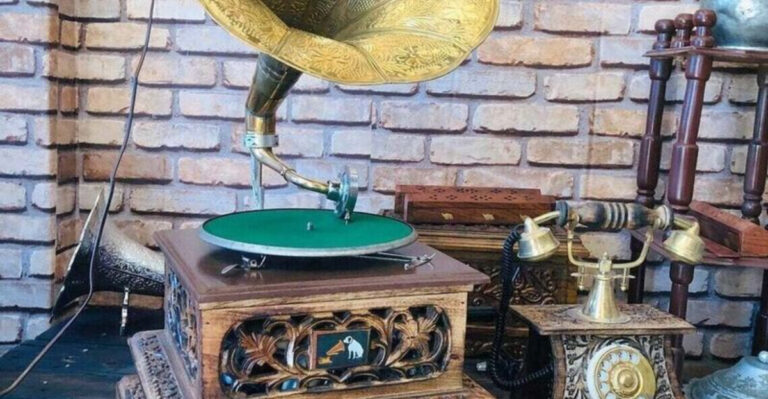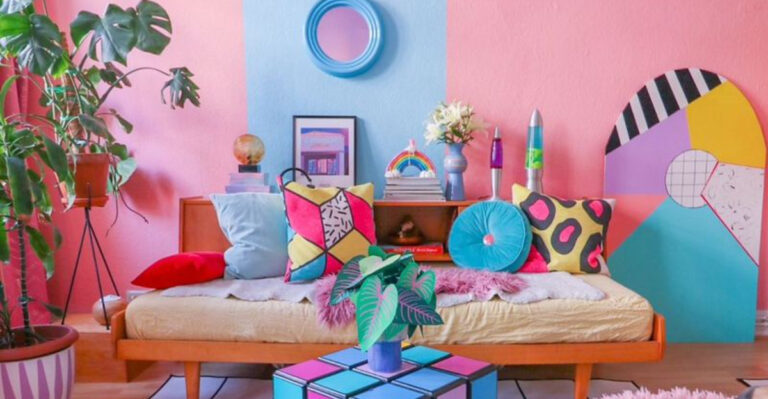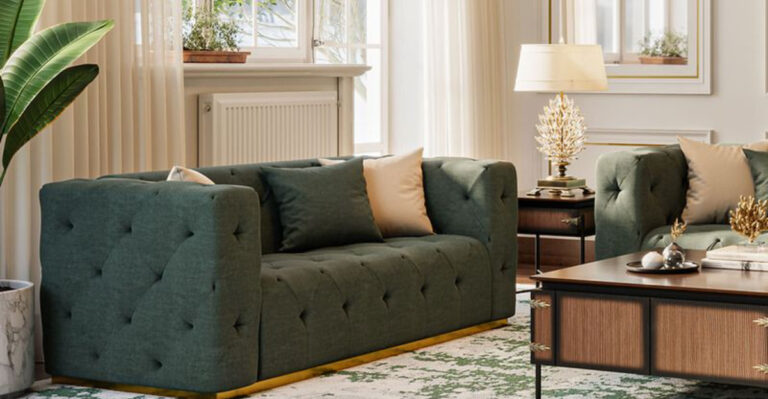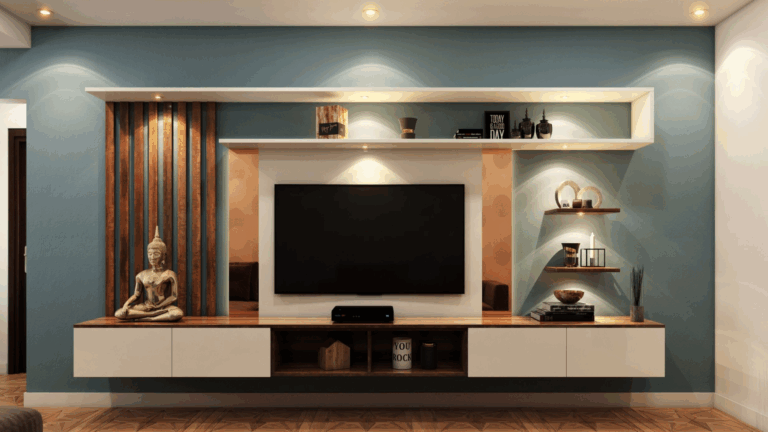16 Ways How A Davenport Sofa Differs From A Typical Sofa And What It Really Is
Ever wondered why someone might call a sofa a ‘Davenport’ instead? This distinctive piece of furniture has a rich history and unique features that set it apart from ordinary sofas in your living room.
Understanding these differences can help you appreciate this classic furniture style and maybe even spot one at an antique store or in period films.
1. Historical Origins Matter
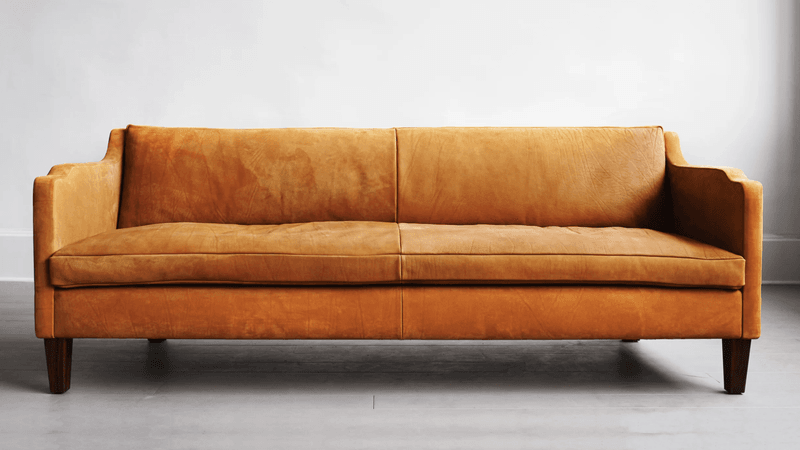
The Davenport sofa wasn’t just any old couch – it earned its name from A.H. Davenport Company, a prestigious Boston furniture maker in the 1880s. Their distinctive writing desks eventually lent their name to these specialized sofas.
Unlike modern mass-produced sofas, authentic Davenports carry a legacy of craftsmanship from the Victorian era. They represent a time when furniture was built to last generations, not just until the next design trend.
2. Compact Writing Desk Connection
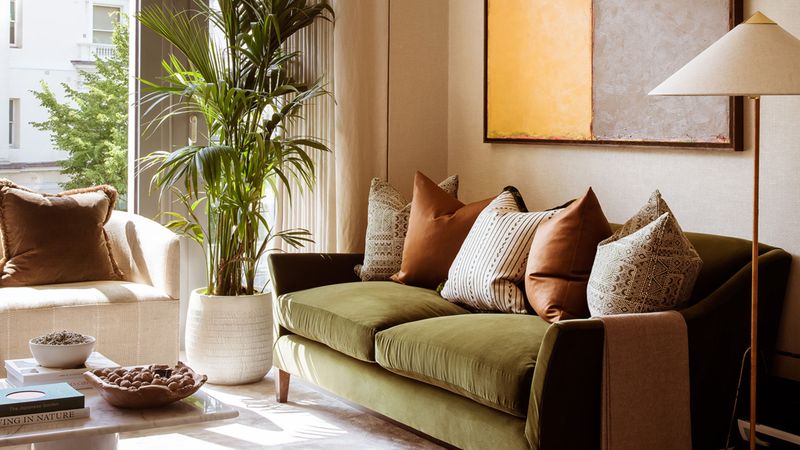
Surprise! The term “Davenport” originally referred to a small writing desk, not a sofa at all. The confusion began when people started using the manufacturer’s name for various furniture pieces, and the sofa definition stuck in some regions.
Modern sofas have no such identity crisis. While today’s furniture names typically describe their function plainly, the Davenport carries this delightful linguistic quirk that connects it to desk-based origins.
3. Regional Vocabulary Variations
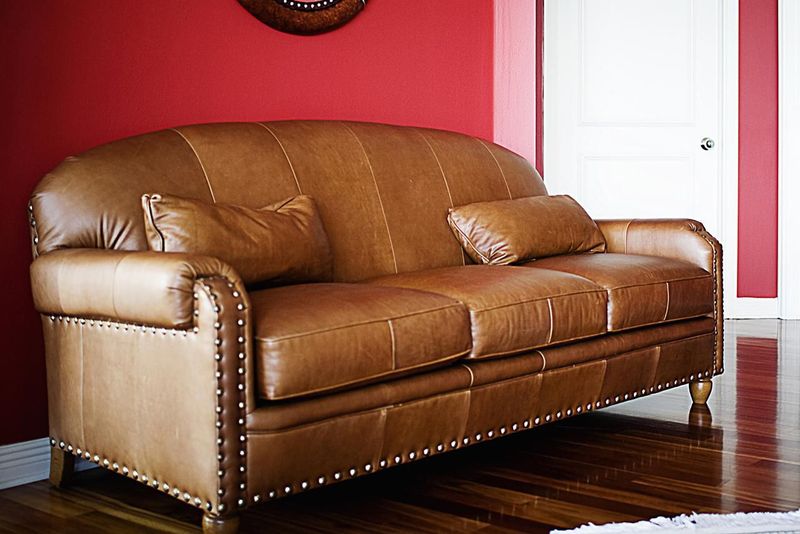
“Pass me the remote, I’ll be on the Davenport” might sound perfectly normal in the Midwest! The term became particularly popular in the northern United States, especially around Michigan, Wisconsin, and Minnesota during the early 20th century.
This regional dialect quirk means that what Midwesterners call a Davenport, others simply call a sofa or couch. The term remains a charming linguistic fossil that reveals something about where a person grew up.
4. Formal Sitting Posture Design
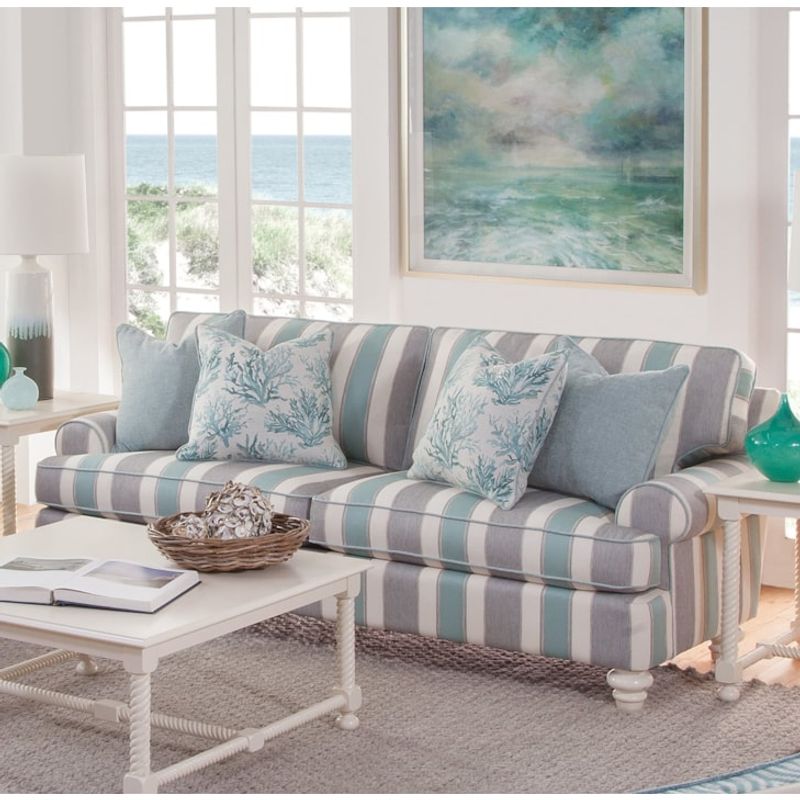
Slouching was simply not an option on a traditional Davenport! These sofas featured firmer cushioning and more upright back designs that encouraged proper Victorian posture during social gatherings.
Modern sofas prioritize casual comfort and relaxation, often with deep seats perfect for movie marathons. The Davenport’s structured design reflects a time when furniture served social functions rather than Netflix-binging purposes.
5. Ornate Wooden Framework
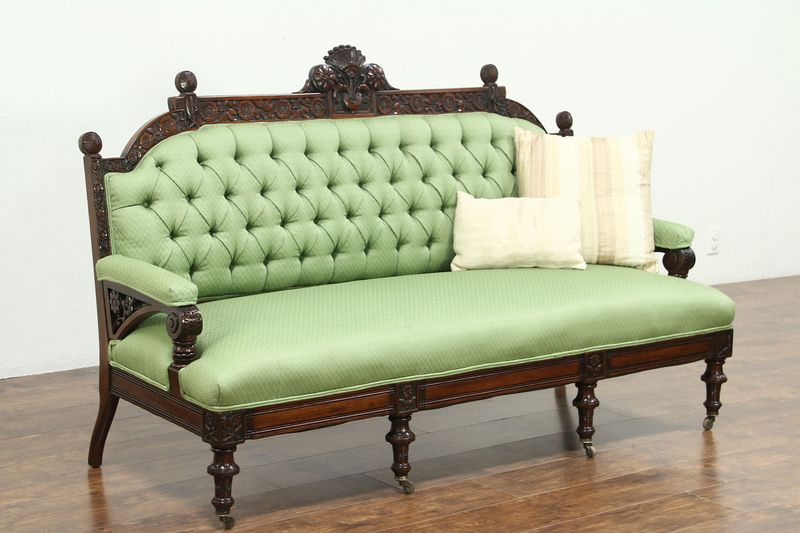
Peek beneath a Davenport’s upholstery and you’ll discover beautiful hardwood frames, often hand-carved with intricate details. Craftsmen would spend days perfecting these wooden elements, considering them as important as the visible portions.
Contemporary sofas typically use engineered wood or metal frames hidden completely from view. The Davenport’s visible wooden accents around arms and legs weren’t just structural—they were decorative statements showcasing the maker’s artistry.
6. Rolled Arm Distinction
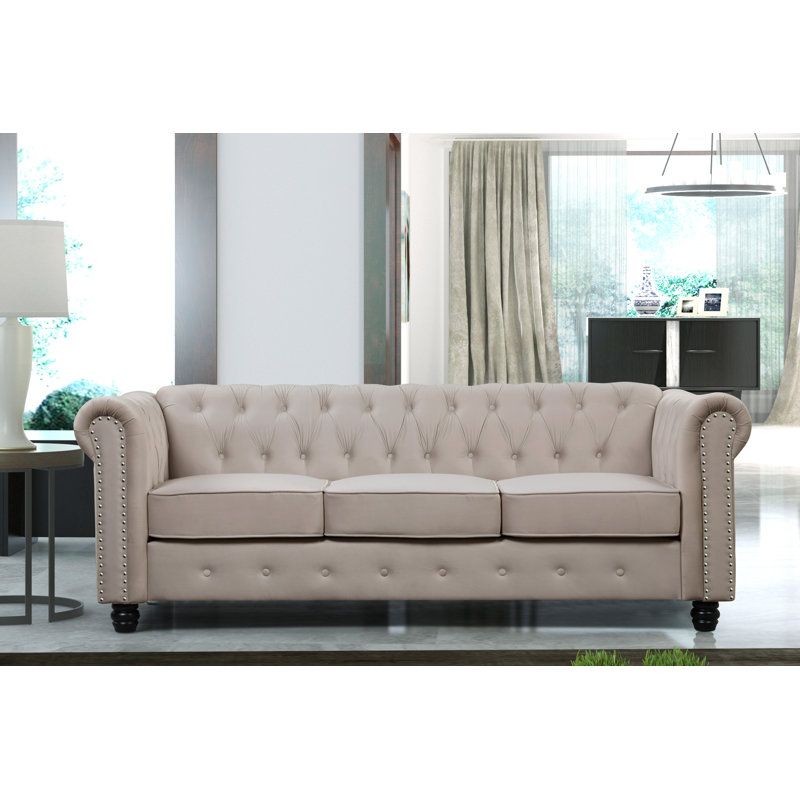
One glance at those arms tells the story! Authentic Davenports feature elegantly rolled arms that curve outward and downward in a smooth, continuous line. This distinctive silhouette became their calling card.
While modern sofas might have square, track, or flared arms, the Davenport’s rolled arms required specialized upholstery techniques. They weren’t just decorative either—they provided the perfect height for resting an elbow during animated Victorian conversation.
7. Premium Upholstery Materials
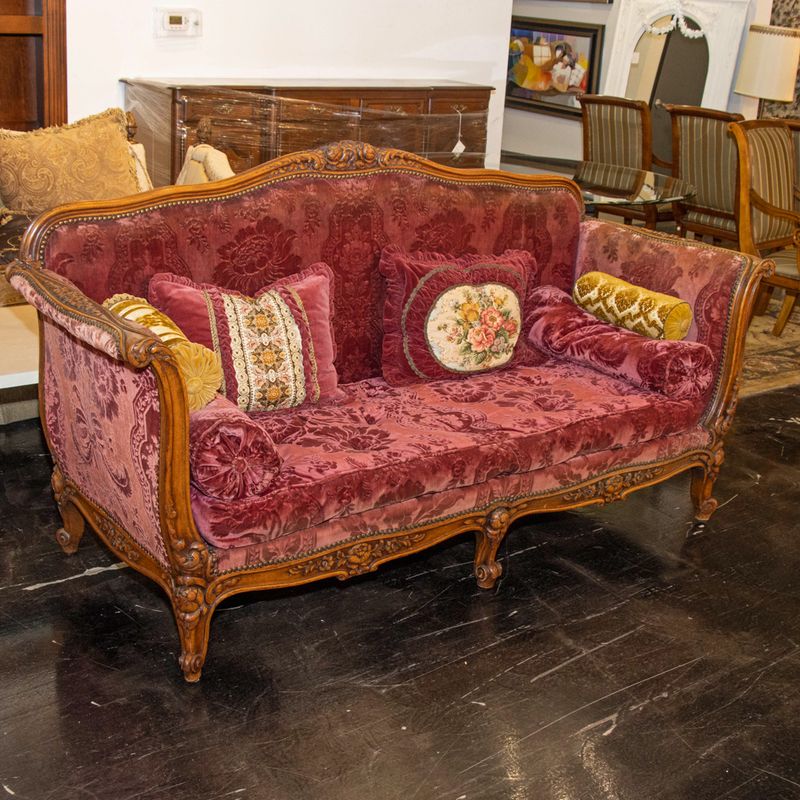
Running your hand across a Davenport meant feeling luxurious velvet, silk damask, or high-quality brocade fabrics. These premium textiles weren’t just beautiful—they signaled the owner’s social standing in Victorian society.
Today’s sofas prioritize stain-resistance and durability with performance fabrics. The Davenport’s sumptuous materials required careful maintenance and gentle use, reflecting an era when furniture was treated with reverence rather than casual familiarity.
8. Button-Tufted Elegance
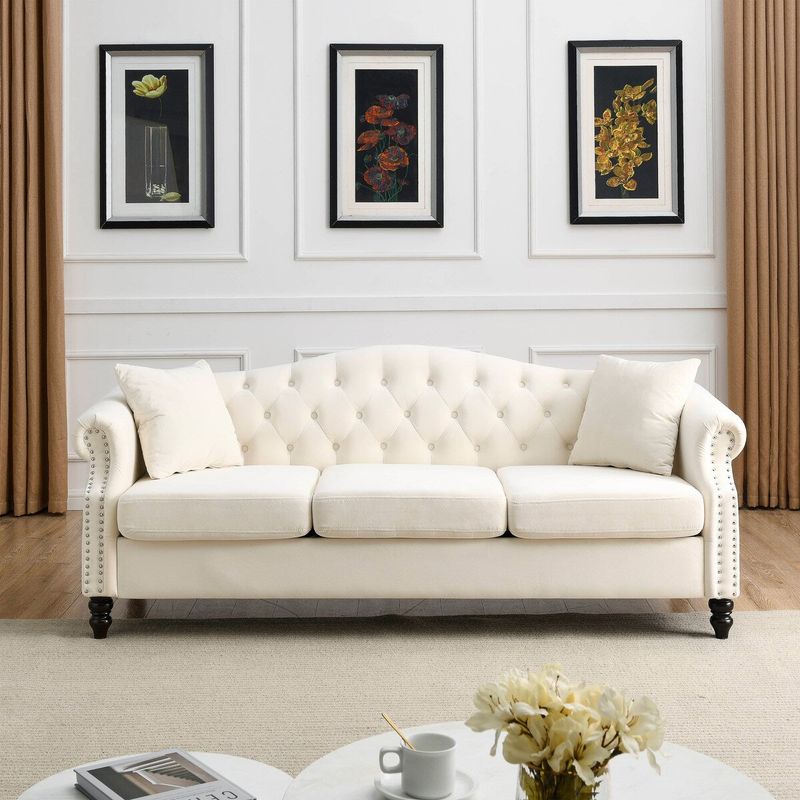
Those charming dimples across a Davenport’s backrest aren’t just decorative! Button tufting—where fabric is pulled into diamond patterns secured by buttons—strengthened the upholstery while creating visual interest.
While some modern sofas might incorporate tufting as a design element, the Davenport’s deep, uniform tufting across both back and sometimes seat cushions remains distinctively more elaborate.
9. Shorter Seat Depth

Modern sofa sprawlers would find themselves sitting awkwardly on a Davenport! With typical seat depths of just 20-22 inches (compared to today’s 24-30 inches), these sofas weren’t designed for lounging.
The shallower seat depth perfectly accommodated Victorian ladies wearing voluminous dresses and petticoats. This practical consideration meant Davenports encouraged a more upright, engaged sitting position rather than the relaxed postures we prefer today.
10. Higher Sitting Position
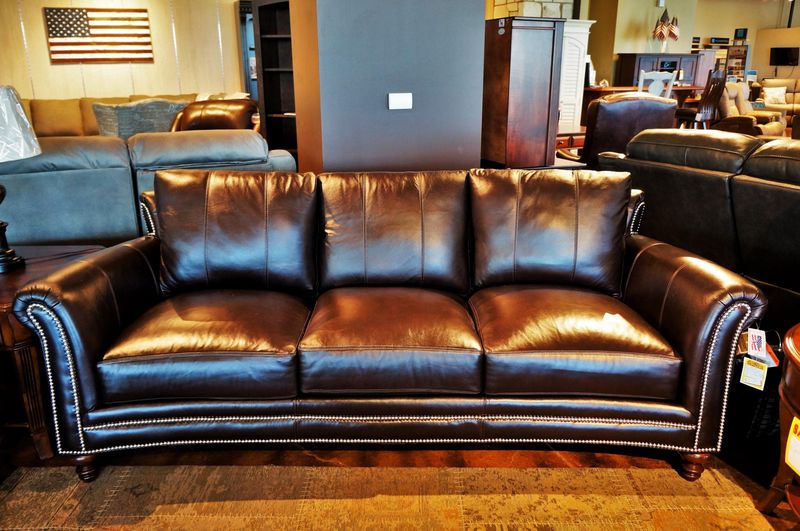
Rising from a Davenport was considerably easier than today’s deep-sink sofas! Sitting approximately 2-3 inches higher than contemporary couches, Davenports kept Victorian ladies and gentlemen perched at a more formal height.
This elevated position served practical purposes in an era of formal dress. With corsets, tailcoats, and stiff collars being everyday attire, the higher seat made graceful entrances and exits possible without awkward struggling that might compromise one’s dignity.
11. Camelback Silhouette
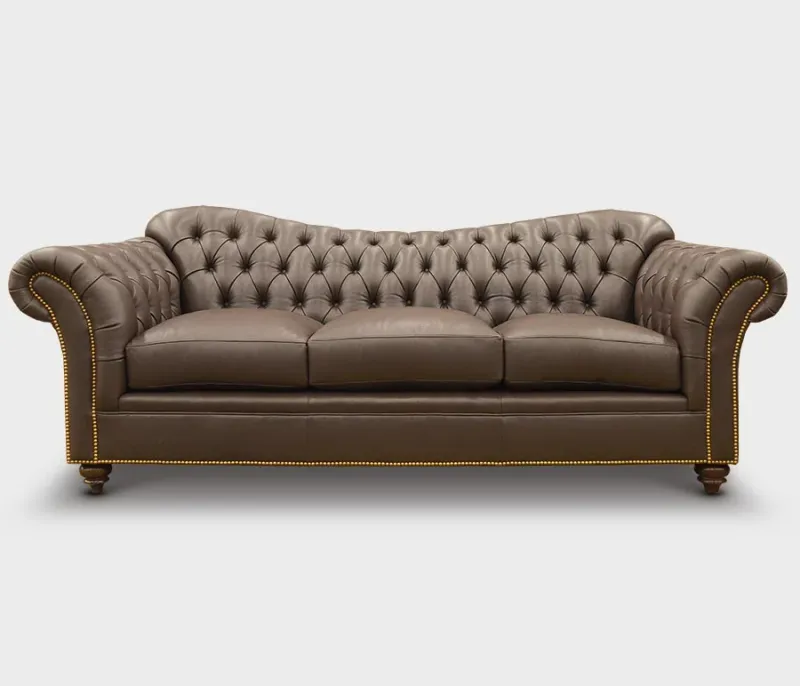
Many authentic Davenports feature that unmistakable curved backrest silhouette resembling a camel’s hump. This elegant design element creates a graceful arch that rises in the center and slopes down toward the arms.
The camelback wasn’t just stylish—it provided superior support for the upper back. Unlike today’s straight-backed or pillow-backed sofas, this distinctive curve became one of the most recognizable characteristics of traditional Davenport design.
12. Exposed Decorative Legs
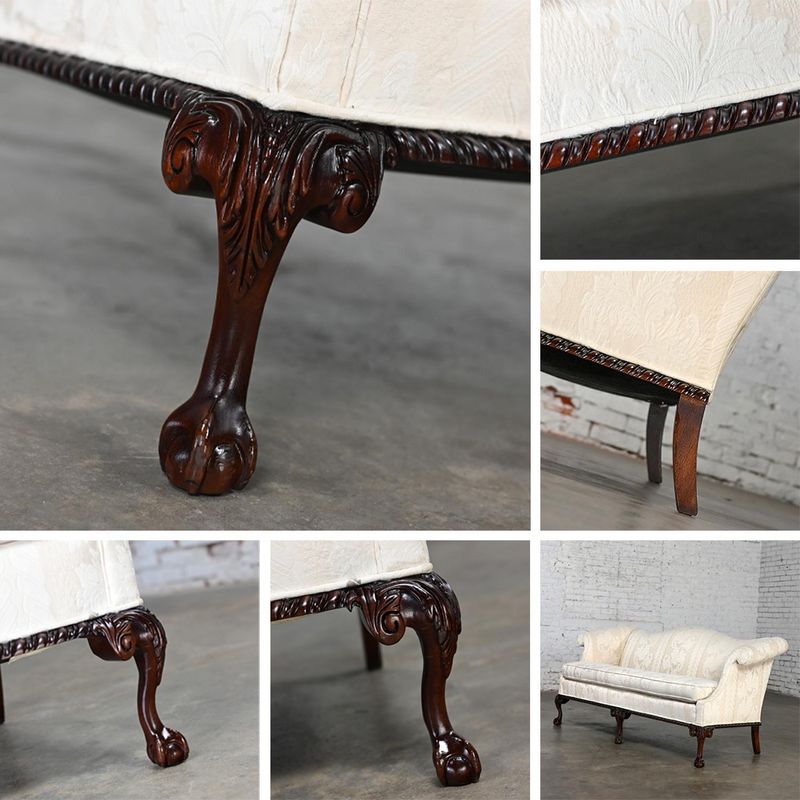
Davenports proudly display their legs! Those carved wooden beauties with cabriole curves or ball-and-claw feet weren’t meant to be hidden under dust ruffles. The exposed legs elevated the sofa both literally and visually, creating an airier appearance.
Modern sofas often conceal their legs completely or use simple metal or wooden pegs, losing that opportunity for artistic expression that Davenport makers embraced through intricately carved leg designs.
13. Smaller Overall Dimensions
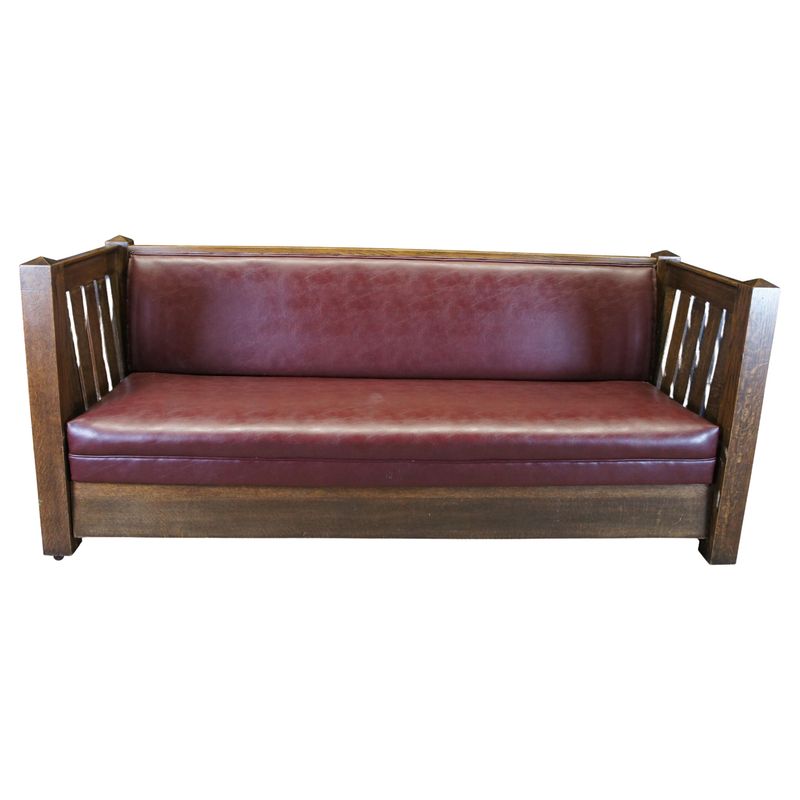
Mansions may have been grand, but their furniture was surprisingly modest! Davenports typically measured 72-78 inches long—noticeably shorter than today’s sprawling 84-96 inch sofas.
This compact footprint suited the parlor-style entertaining of Victorian homes where multiple small conversation areas were preferred.
Unlike our modern open-concept rooms built around massive sectionals, Davenports created intimate seating arrangements that facilitated proper conversation rather than television viewing.
14. Firmer Cushion Construction
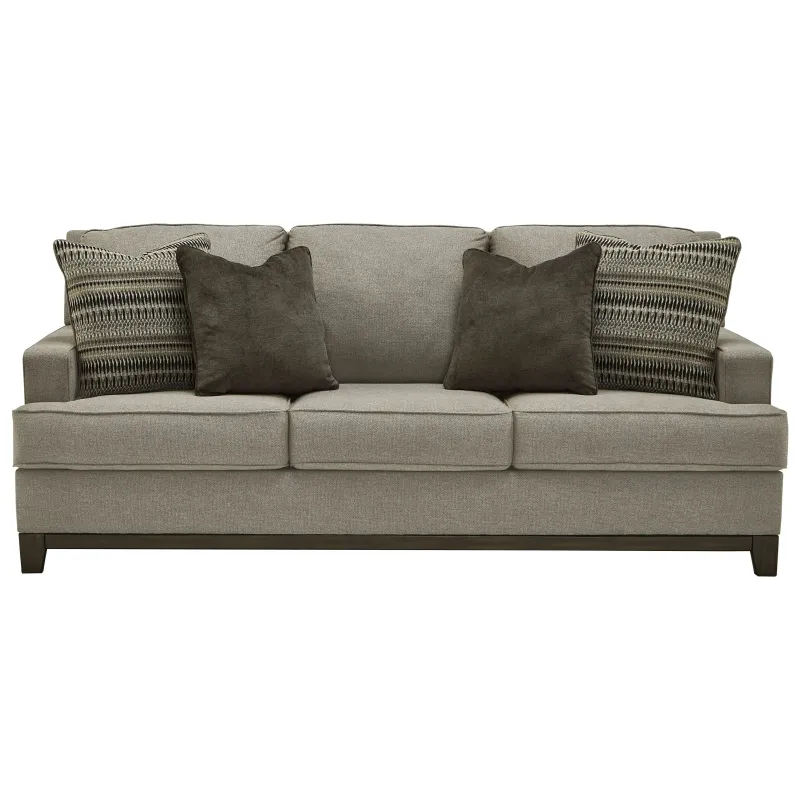
Forget cloud-like cushions! Traditional Davenports featured horsehair stuffing that provided firm, structured support that maintained its shape for decades. This dense padding created a distinctly different sitting experience.
Modern sofas prioritize sink-in comfort with foam or down filling. The Davenport’s unyielding cushions seem almost stern by comparison, but they reflected practical concerns—maintaining proper posture during social calls and ensuring the furniture would last for generations.
15. Single-Piece Back Cushion
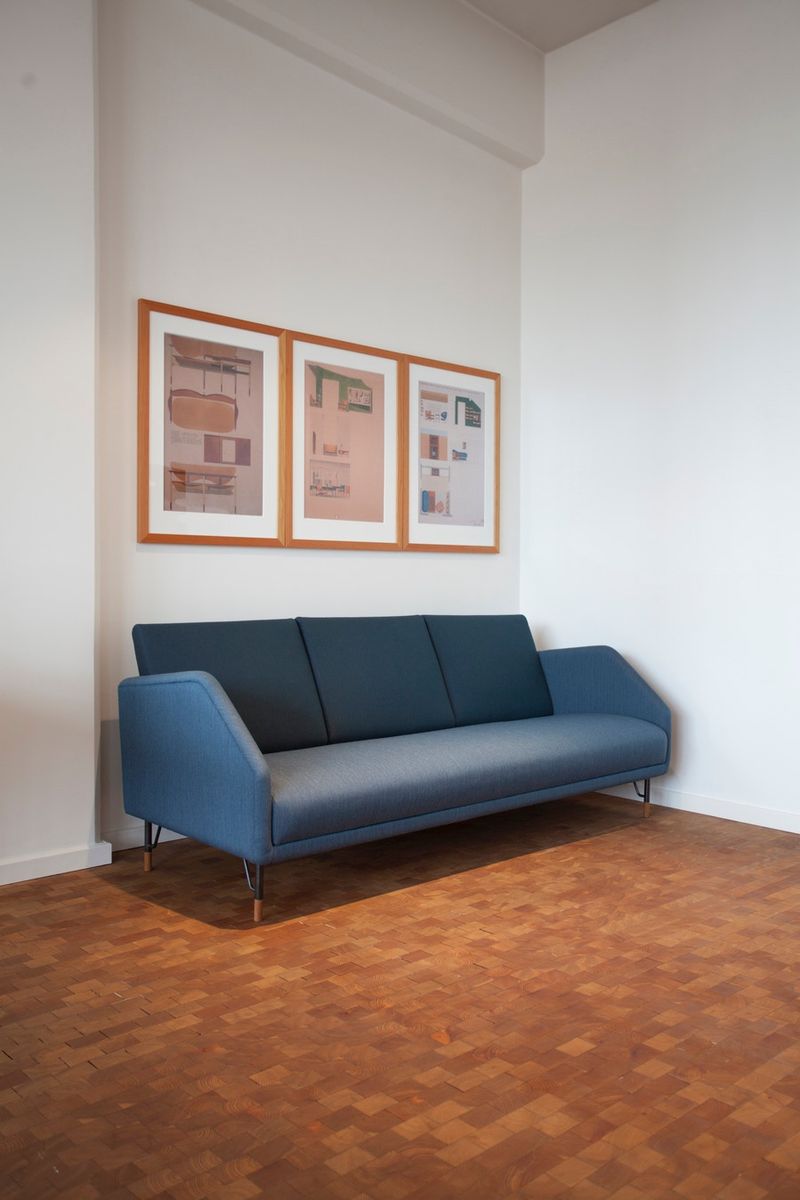
Look closely at a Davenport and you’ll notice its back cushion is typically one continuous piece rather than multiple loose pillows. This unified design creates a more formal, structured appearance that maintains its shape regardless of use.
Contemporary sofas often feature removable back cushions that can be fluffed, rearranged, or even taken off completely. The Davenport’s fixed back reflects its origins as formal furniture where maintaining a presentable appearance at all times was essential.
16. Pop Culture Preservation
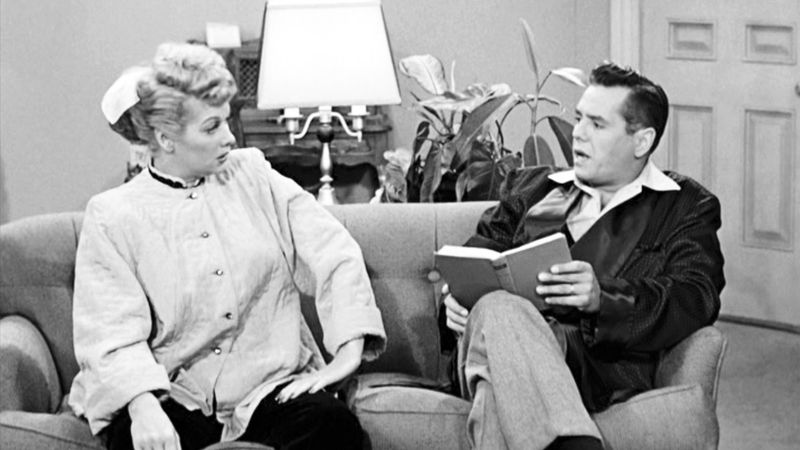
The Davenport has achieved immortality through vintage television! Shows like “I Love Lucy” and “The Dick Van Dyke Show” featured these classic sofas, cementing them in America’s cultural memory.
Modern period dramas like “Downton Abbey” continue showcasing authentic Davenports, introducing new generations to this distinctive furniture style. While contemporary sofas come and go with passing trends, the Davenport remains instantly recognizable across decades of entertainment history.

